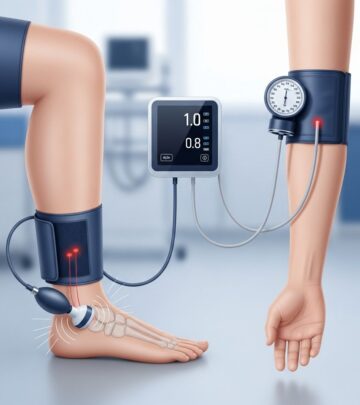Asthma Attacks: Symptoms, Causes, and Risk Factors Explained
Uncover the warning signs, triggers, and dangers of asthma attacks and learn vital steps for emergency management and prevention.

Asthma is a chronic disease affecting the airways in the lungs, characterized by recurring inflammation and overreaction of the immune system. An asthma attack can quickly escalate into a medical emergency, making it essential to recognize early signs, understand triggers, and know when to seek professional help. This article presents a comprehensive guide to the symptoms, causes, risk factors, and management steps for asthma attacks, drawing on leading clinical sources and current medical understanding.
What is an Asthma Attack?
An asthma attack refers to an acute worsening of asthma symptoms caused by tightness around the muscles of the airways, swelling of the airway lining, and excessive mucus production. These changes narrow the airways and obstruct normal airflow, making breathing extremely difficult.
Symptoms of Asthma Attacks
Asthma attack symptoms result from the tightening of muscles around the airways, irritation, swelling, and mucus build-up. Recognizing symptoms early can be life-saving.
- Shortness of breath
- Chest tightness or pain
- Coughing
- Wheezing (a high-pitched, whistling sound when breathing)
Severe asthma attack symptoms may include:
- Gasping for breath
- Difficulty speaking due to shortness of breath
- Straining of chest muscles to breathe
- Worse symptoms when lying down
- Severe sweating
A key indicator of an attack can be measured with a peak flow meter, which assesses how fast you can expel air from your lungs. Readings below 80% of your personal best indicate an asthma attack, and many asthma action plans incorporate these results.
Table: Common vs. Severe Symptoms
| Common Symptoms | Severe Symptoms |
|---|---|
| Shortness of breath | Gasping for breath |
| Chest tightness | Straining chest muscles to breathe |
| Coughing | Difficulty speaking |
| Wheezing | Severe sweating |
| Peak flow < 80% best | Peak flow < 50% best |
Peak Flow Meter and Asthma Action Plans
An asthma action plan is a personalized tool to guide therapy and response based on symptoms and peak flow readings. The plan is typically divided into zones:
- Green Zone: No symptoms, taking maintenance medications as prescribed, peak flow ≥ 80% of personal best.
- Yellow Zone: Symptoms present, use quick-relief inhaler, peak flow 50–79% of personal best.
- Red Zone: Severe symptoms or no improvement after inhaler use, seek emergency care immediately, peak flow < 50% of personal best.
When to Seek Medical Care
If you do not have an asthma action plan, or you are unsure about your symptoms, seek emergency care if quick-relief medicine does not help, or if severe shortness of breath or chest pain persists.
- Symptoms worsen rapidly or do not improve after inhaler use
- Shortness of breath with minimal activity
- Difficulty speaking or straining muscles to breathe
- Peak flow < 50% of best
Regular checkups are important to track asthma control, adjust medications, and update your action plan as needed.
Causes of Asthma Attacks
Asthma is generally a lifelong inflammation of the airways due to overactivity of the immune system. Key changes in the lungs during an attack include:
- Tightening of airway muscles
- Swelling and irritation of airway lining
- Excess mucus production
These changes make breathing difficult and set the stage for acute asthma attacks.
Common Triggers
- Allergic reactions to pollen, pets, mold, cockroaches, or dust mites
- Upper respiratory illnesses: Colds, flu, or other illnesses affecting the nose, mouth, and throat
- Tobacco smoke exposure
- Cold, dry air or weather changes
- Exercise (exercise-induced asthma)
- Gastroesophageal reflux disease (GERD)
- Pollution or irritating chemicals
- Some pain relievers and other medicines: aspirin, NSAIDs
- Depression or anxiety
Asthma attacks can be triggered by more than just allergens; irritants like chemical fumes or even emotional stress may contribute.
Table: Typical Asthma Attack Triggers
| Trigger Type | Examples |
|---|---|
| Allergic | Pollen, pet dander, dust mites, mold, cockroach droppings |
| Infectious | Colds, flu, throat infections |
| Environmental | Tobacco smoke, air pollution, strong odors |
| Physical | Exercise, cold/dry air |
| Medical | Pain relievers, NSAIDs, GERD |
| Emotional | Stress, depression, anxiety |
Risk Factors for Asthma Attacks
Anyone diagnosed with asthma is at risk for an attack, but certain factors increase the chance of severe or frequent episodes:
- Poorly controlled allergies
- High or repeated exposure to triggers
- Non-adherence to daily medication
- Incorrect inhaler use
- Chronic depression or anxiety
- Coexisting illnesses, such as heart disease or diabetes
Frequently Asked Questions (FAQs)
Q: What should I do during an asthma attack?
A: Follow your asthma action plan, use your quick-relief inhaler as prescribed, and check your peak flow meter. If symptoms are severe or do not improve quickly, seek emergency medical help.
Q: Can an asthma attack be fatal?
A: Yes, untreated severe asthma attacks can be life-threatening due to extreme reduction in airflow and oxygen levels.
Q: What are signs that my asthma is worsening?
A: If you notice more frequent or intense symptoms, need to use your rescue inhaler more often, or see your peak flow readings decreasing, your asthma may be worsening.
Q: Why is an asthma action plan important?
A: It gives clear instructions on medication use, emergency steps, and monitoring, helping you respond quickly to changes in symptoms and prevent attacks from becoming severe.
Q: Can lifestyle changes reduce asthma attacks?
A: Avoiding triggers, managing allergies, adhering to medications, and maintaining regular follow-ups with healthcare providers can lower risk.
Asthma Attack Prevention
Prevention centers on trigger avoidance, medication adherence, and ongoing health management:
- Identify and minimize exposure to known triggers
- Take prescribed long-term control medications daily
- Use inhalers correctly and maintain inhaler hygiene
- Monitor peak flow and symptoms regularly
- Update your asthma action plan with your care team
- Get annual flu shots and treat colds promptly
Regular Medical Checkups
Consistent medical follow-up allows for:
- Medication adjustments
- Reassessment of triggers
- Review and update of your action plan
- Discussion about related conditions (e.g., GERD or allergies)
Summary
Asthma attacks are serious health events requiring prompt recognition and effective management. Understanding symptoms, triggers, and risk factors—and following a structured action plan—can dramatically improve your safety and quality of life. Consult regularly with healthcare professionals to optimize your asthma control and minimize the risk of severe attacks.
References
- https://www.mayoclinic.org/diseases-conditions/asthma-attack/symptoms-causes/syc-20354268
- https://www.mayoclinic.org/diseases-conditions/occupational-asthma/symptoms-causes/syc-20375772
- https://www.mayoclinic.org/diseases-conditions/asthma-attack/multimedia/asthma/vid-20084746
- https://www.mayoclinic.org/diseases-conditions/asthma/symptoms-causes/syc-20369653
- https://www.mayoclinic.org/diseases-conditions/childhood-asthma/symptoms-causes/syc-20351507
- https://www.mayoclinic.org/diseases-conditions/asthma-attack/diagnosis-treatment/drc-20354274
- https://www.mayoclinic.org/diseases-conditions/exercise-induced-asthma/symptoms-causes/syc-20372300
- https://www.youtube.com/watch?v=-Q_e3oV38rU
- https://my.clevelandclinic.org/health/diseases/6424-asthma
- https://www.mayoclinic.org/diseases-conditions/asthma-attack/in-depth/asthma/art-20043943
Read full bio of medha deb












